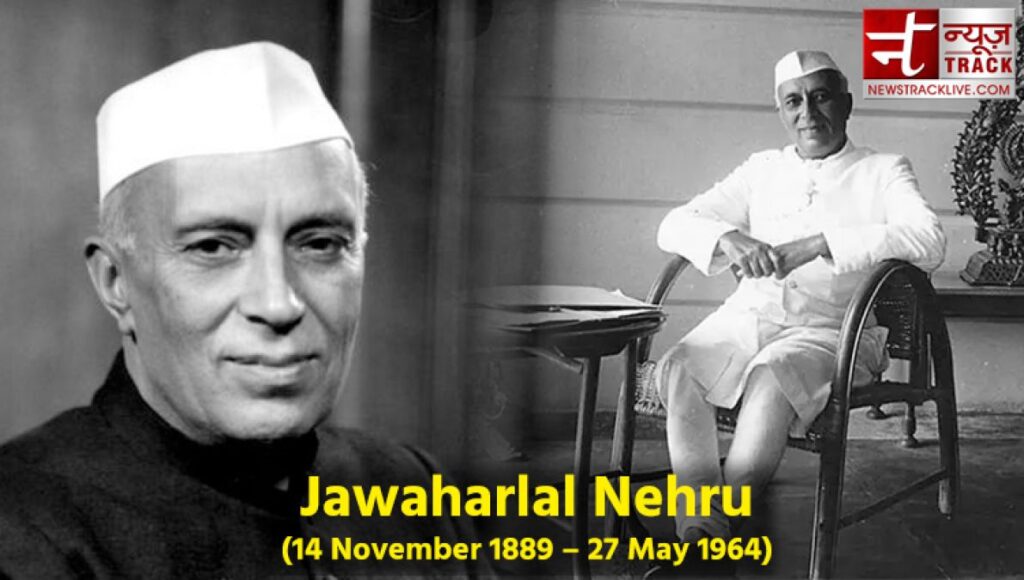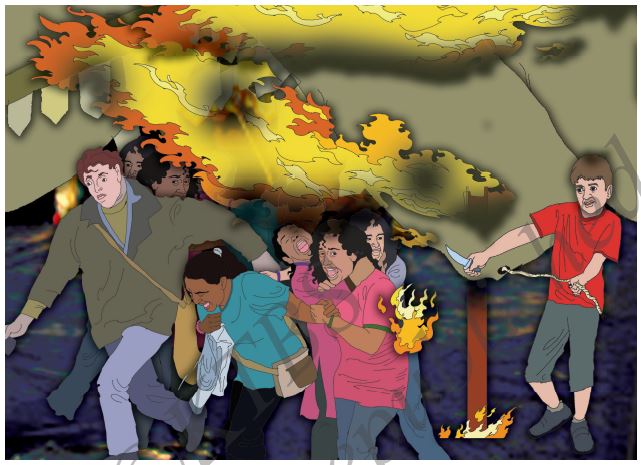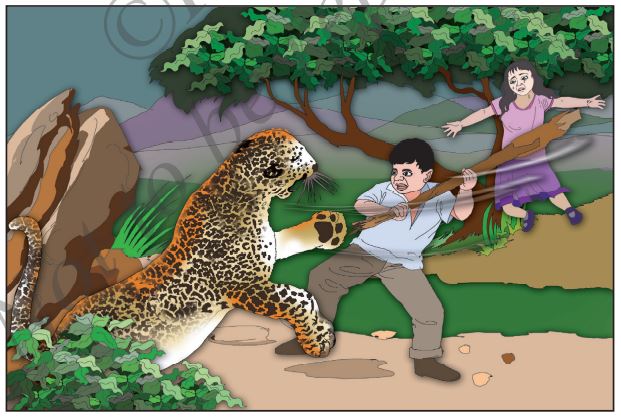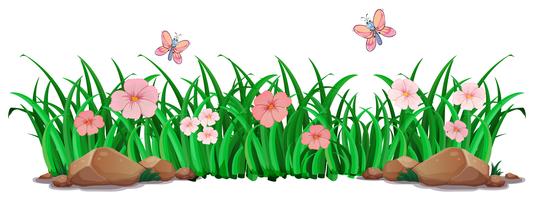Children of Courage Bravery Awards – Unit – 8 : Prose
Every year the Indian Council for Child Welfare (ICCW) awards children who have performed outstanding deeds of bravery; about 25 children below the age of 16 are given this award annually. The national awards for bravery began in The first award was given to a child who saved the life of the first Prime Minister of India – Jawaharlal Nehru.


Let us know how it all began.
1. On 2nd of October 1957 India’s first Prime Minister, Jawaharlal Nehru, was watching a performance at Delhi’s Ramlila ground in the Red Fort. A fire broke out in a shamiana through a short circuit. Harish Chandra, a 14-year old scout, quickly took out his knife and cut the burning shamiana. This act saved the lives of hundreds of trapped people. Pt. Nehru was inspired by this to initiate the awards. He asked the authorities to honour brave children from all over the country. This tradition continues even today. Brave Harish Chandra became the first recipient of the award.

2. The Bravery Awards are announced on November 14th (Children’s Day) and presented by the Prime Minister on the eve of Republic Day. The awardees receive a medal, a certificate and cash as a token of appreciation for their valour. Some of them are also granted financial assistance to complete their higher education. On 26th January, they take part in the Republic Day Parade in New Delhi, riding atop decorated elephants.
3. The awards are given to acknowledge the extraordinary courage displayed by children in difficult situations. The awards also encourage children to use their presence of mind and show courage in real life. Some children have saved lives, some have helped the police in arresting criminals and some others have averted accidents. While doing these deeds some have
even sacrificed their lives.
4. Let us come to know the brave acts of some of these young awardees, sometimes known as ‘ Brave Hearts’.
5. In 2008, six-year-old twins Gagan and Bhoomika J. Murthy of Bengaluru, were honoured for saving an eighteen-month-old child. The twins were sitting in their father’s car at the vegetable market in Madivala. They saw two bulls running toward each other. They saw the child lying in the bulls’ path. The two immediately ran out and pulled the child away.
6. In 2008 another awardee was Rahul, a twelve-year-old balloon seller. He was an eye-witness to the blasts in New Delhi. The information that he gave about the men who planted bombs on one of the important roads helped the police in making sketches of the criminals.
7. Silver Kharbani of Meghalaya saved the life of her young cousin who was caught in a fire.
8. Vishal Suryaji Patil of Maharashtra saved a woman and her child from drowning.
9. Among the 21 children conferred with the National Bravery Awards for 2009 was thirteen-year-old Gaurav Singh Saini from Haryana. He saved 50-60 people during a stampede at the Naina Devi temple in Himachal Pradesh.

10. Kumari Maibam Prity Devi of Manipur, aged 10, saved several lives. She used her bare hands to dispose of a live grenade that was hurled at her mother’s shop in Imphal. Her aim is to fight terror by joining the police force.
11. Ten-year-old Priyanshu Joshi from Uttarakhand is one of the award winners for 2010. He single-handedly fought off a leopard that was trying to attack his sister when they were on their way to school.
12. Eleven-year-old Gurjeevan Singh from Punjab helped to prevent a bank robbery by attacking the thieves with bricks. They opened fire, but he escaped. The pistol slipped from their hands and others managed to catch the robbers.
13. Moonis Khan (15) from Madhya Pradesh received the award for saving an old man from a railway accident.
14. We salute these brave children.

Words to Know :
shamiana – decorated tent, ಶಾಮಿಯಾನ
initiate – to begin something, ಆರಂಭಿಸು, ಶುರುಮಾಡು
recipient – a person who receives something, ಸ್ವೀಕರಿಸುವವರು
eve – evening, before the event, ಹಿಂದಿನ ಸಂಜೆ, ಮುನ್ನಾ ದಿನ
valour – great courage, ಶೌರ್ಯ, ಪರಾಕ್ರಮ
atop – on the top of, ಮೇಲೆ
confer – to give somebody an award, ನೀಡುತ್ತದೆ, ಅನುಗ್ರಹಿಸು, ದಯಪಾಲಿಸು
averted – avoided, ನಿವಾರಿಸು
stampede – a situation in which a group of people suddenly start running, ನೂಕುನುಗ್ಗಲು
salute – a show of honour for somebody in public for their achievement, ವಂದನೆ, ಗೌರವ
ಸಂವೇದ ವಿಡಿಯೋ ಪಾಠಗಳು
SAMVEDA 5th English Children of Courage Bravery Awards
ಪೂರಕ ವಿಡಿಯೋಗಳು
Chidren of Courage Bravery Awards | Class 5 | English |Unit 8 Prose| With Kannada Explanation
Chidren of Courage Bravery Awards | Class 5 | English |Unit 8Prose| Notes
Competency – Noun, Adjective (ವ್ಯಾಕರಣ)
What Is a Noun?
Definition: A noun is a word that names a person, place, thing, or idea.
Concrete nouns name people, places, or things that you can touch, see, hear, smell, or taste.
| Person | Place | Thing |
|---|---|---|
| man | river | dog |
| Mrs. Jones | Paris | book |
| doctor | mountains | sports car |
| Maddie | home | Ferrari |
Examples of nouns are:
- People: teacher, cleaner, social worker, footballer, boy, girl.
- Animals: dog, cat, lion, tiger.
- Places: field, school, house, swimming pool, garden.
- Things: pen, pencil, table, mobile phone, tree.
- Abstract nouns: horror, danger, happiness, kindness, heat.
5 Important Types of Noun | Noun ನಲ್ಲಿರುವ 5 ವಿಧಗಳು
Noun, Verb, Adverb and Adjective ಹೇಗೆ ಅರ್ಥ ಮಾಡ್ಕೋಬೇಕು | Class – 2
Adjective
We can use adjectives to describe people, places and things.
We’ve got a small car.
I saw a white bird.
This book isn’t very old.
How to use them
We don’t add s to the adjective when it’s plural.
My brothers are short.
We’ve got three black cats.
She watched some old films.
Class 5: Adjectives
ಇಂಗ್ಲಿಷ್ ವಾಕ್ಯ ರಚನೆ – Subject + be + Adjectives
Class – 85 | Adjectives ending in -ed and -ing in English (In KANNADA)
ಪ್ರಶ್ನೋತ್ತರಗಳು
ಈ ಪಾಠದ ಪ್ರಶ್ನೋತ್ತರಗಳಿಗಾಗಿ ಮೇಲಿನ ಲಿಂಕ್ ಮೇಲೆ ಕ್ಲಿಕ್ ಮಾಡಿ.

